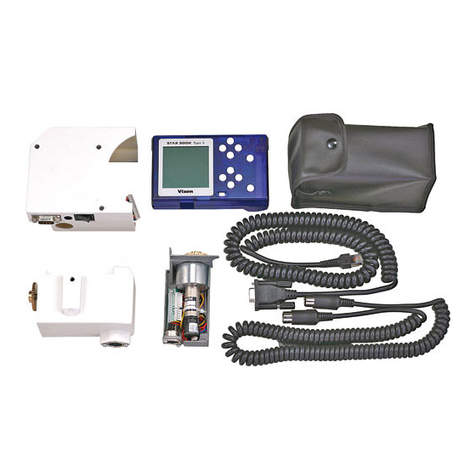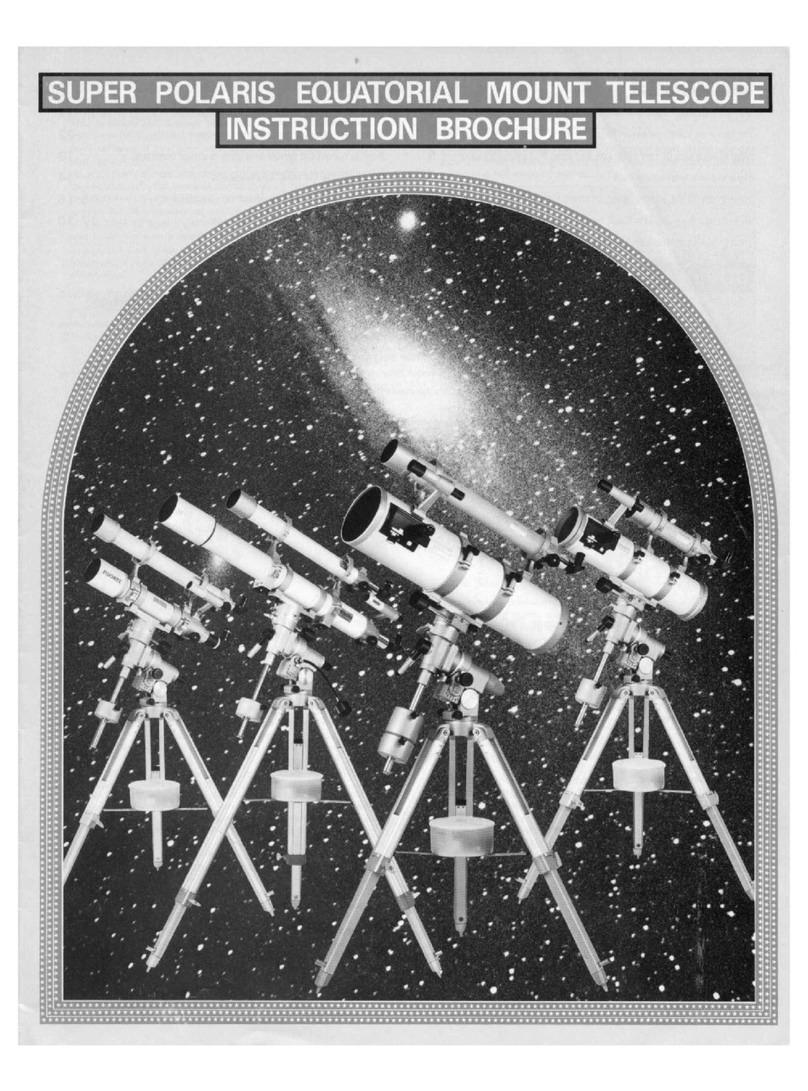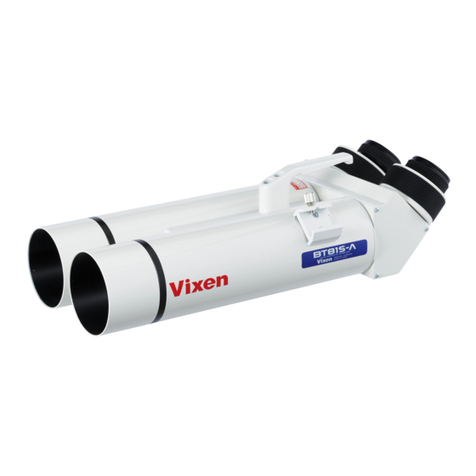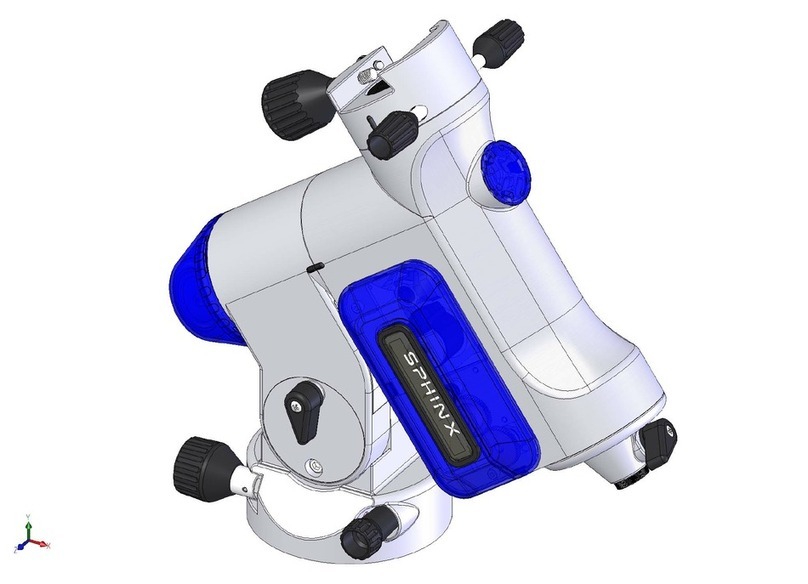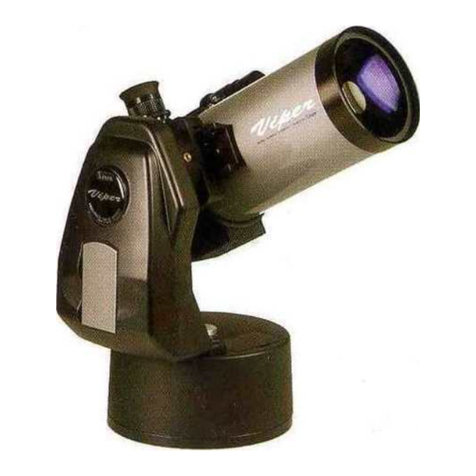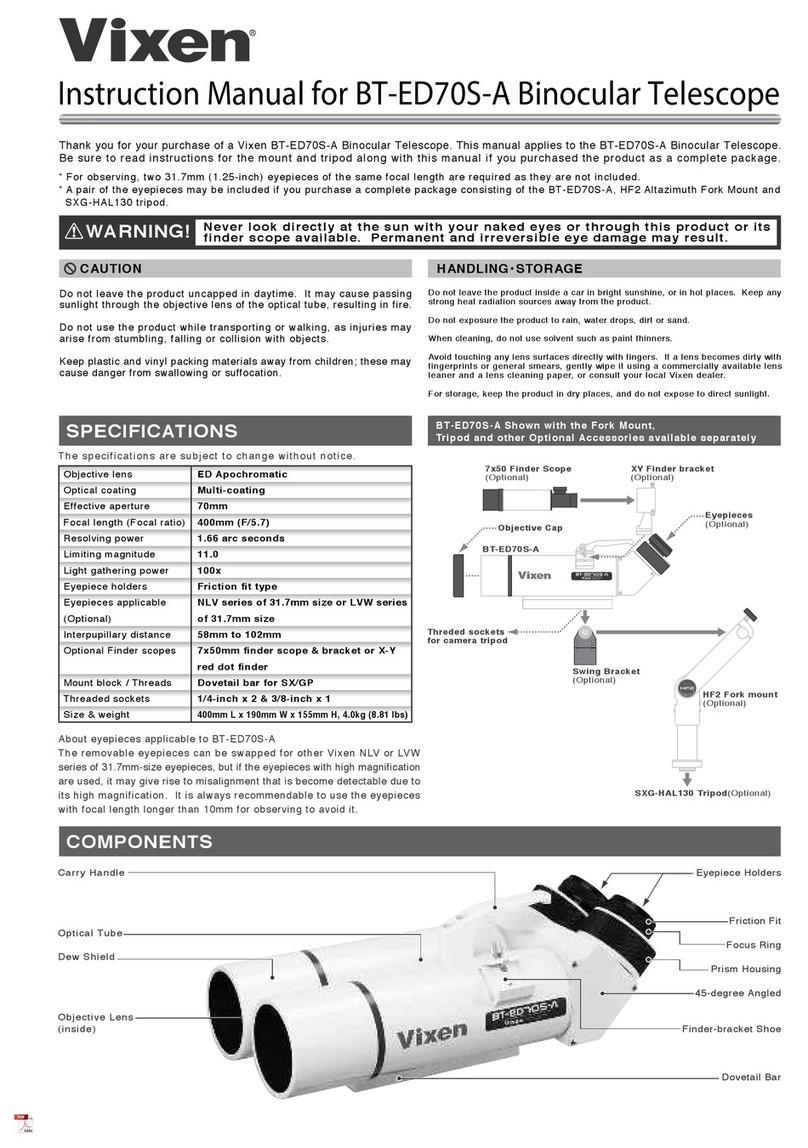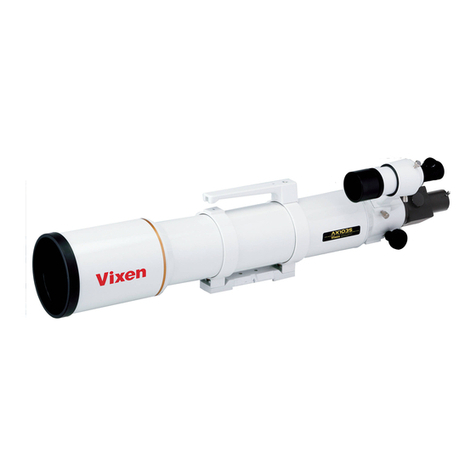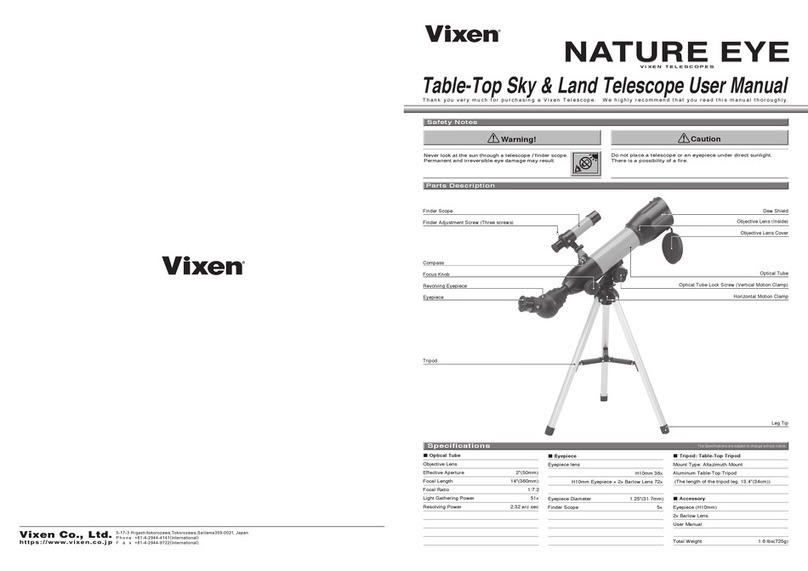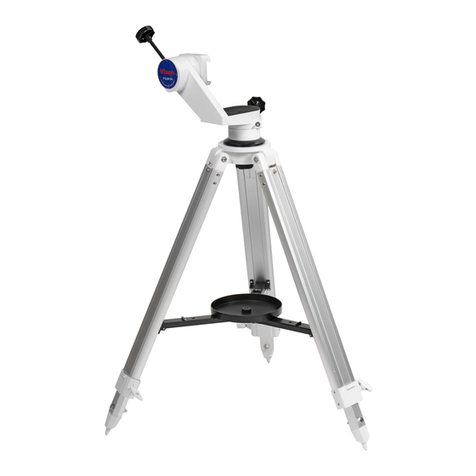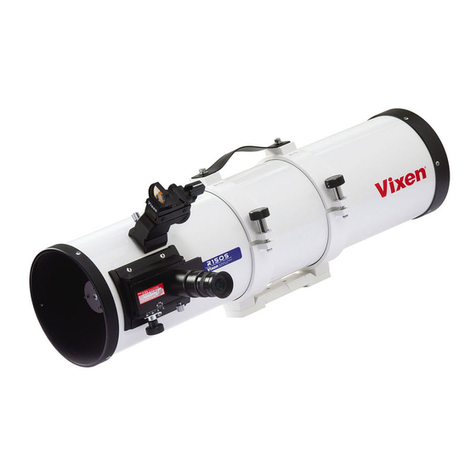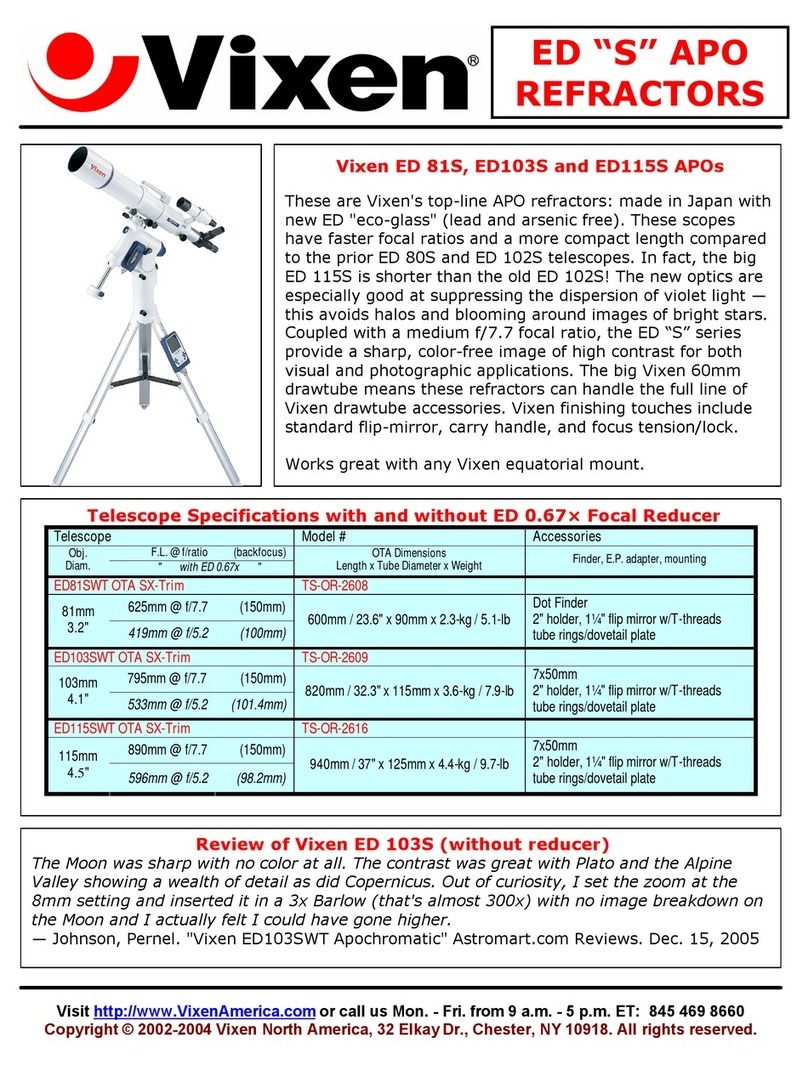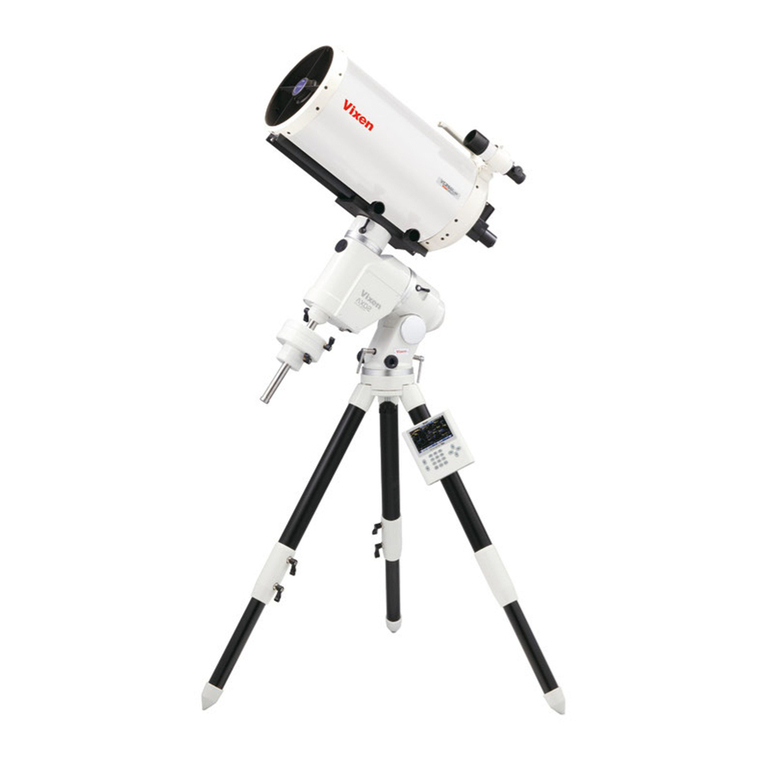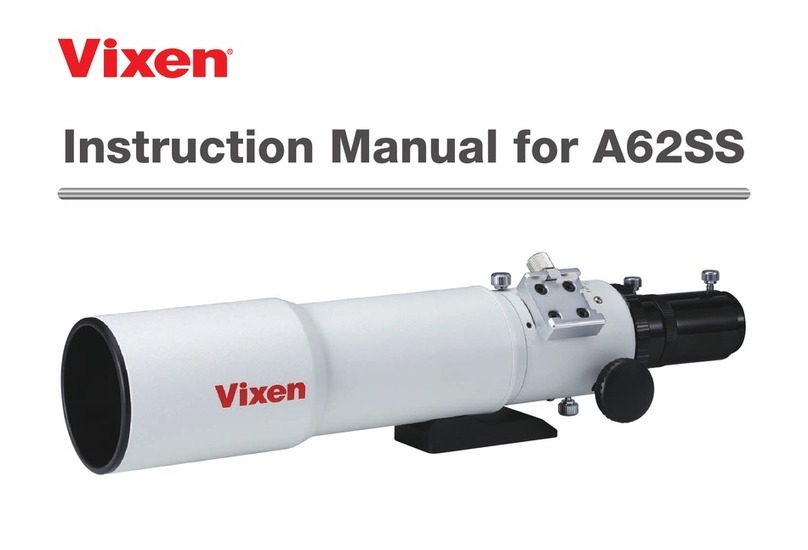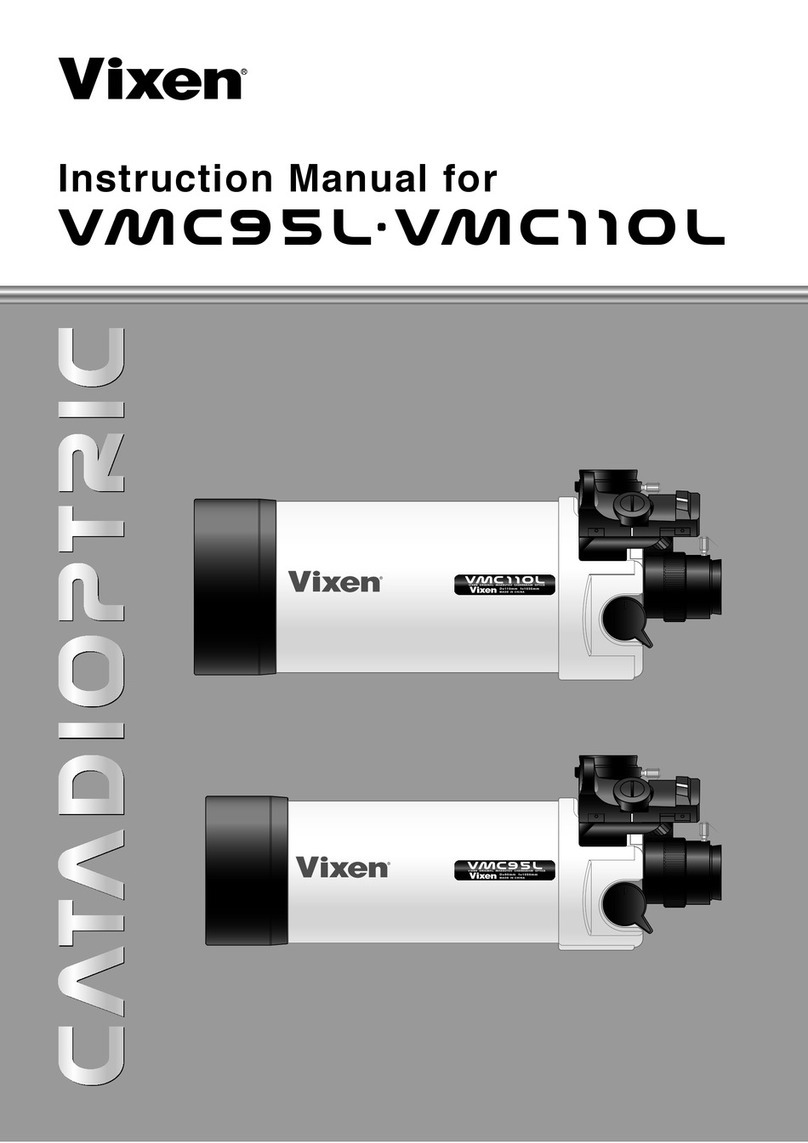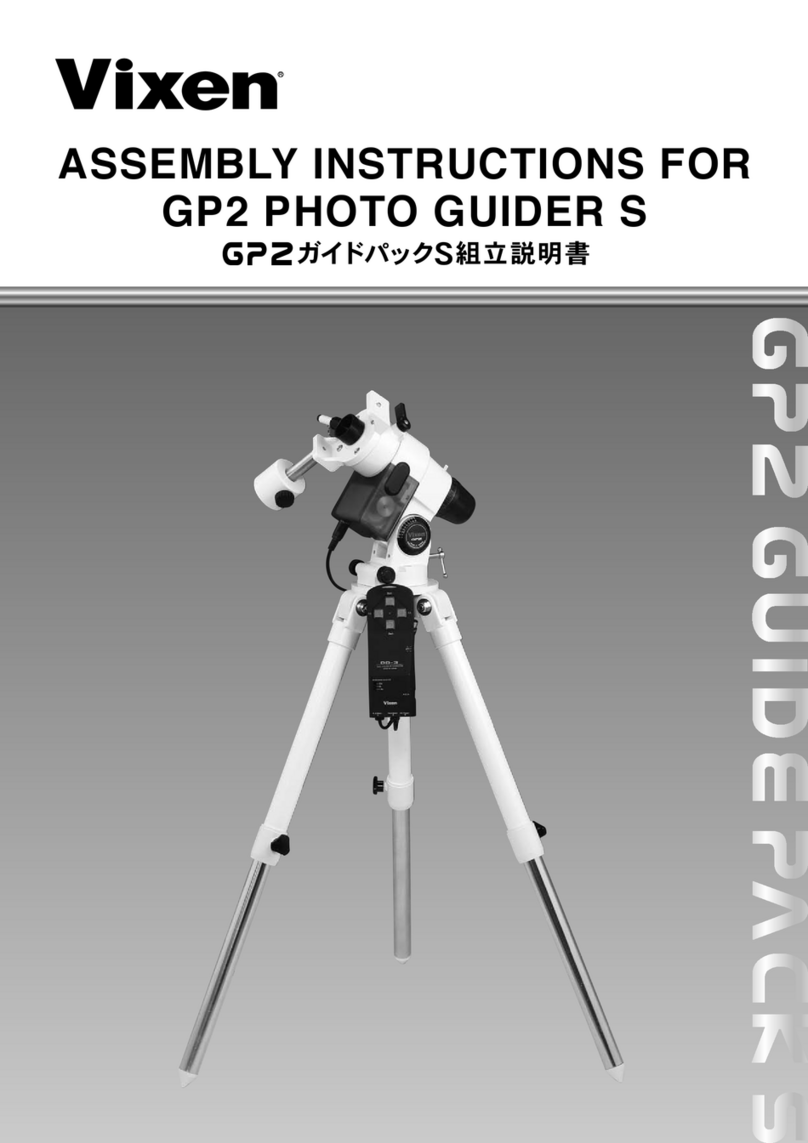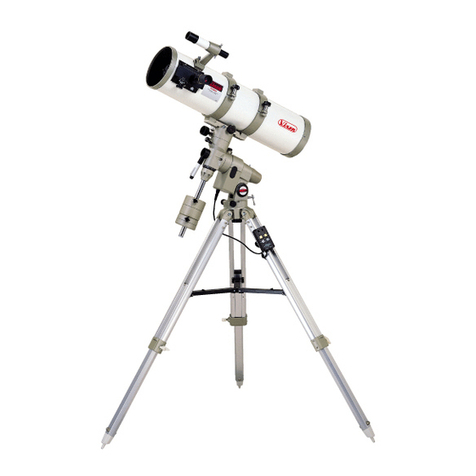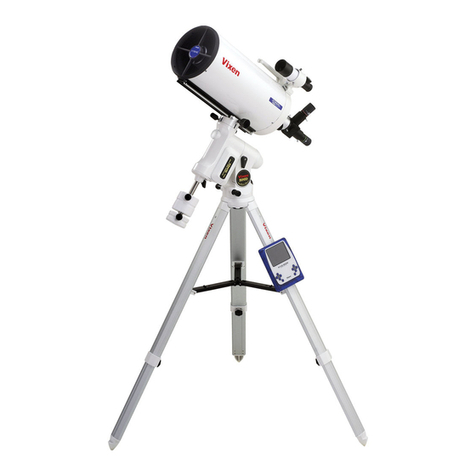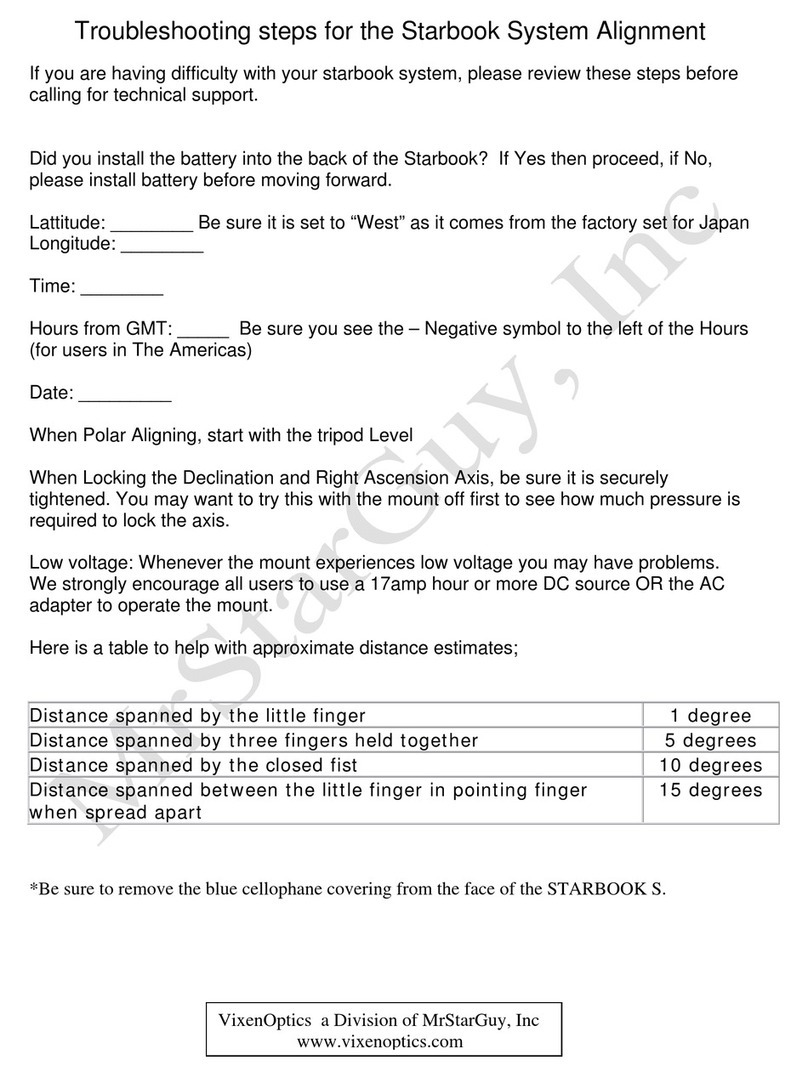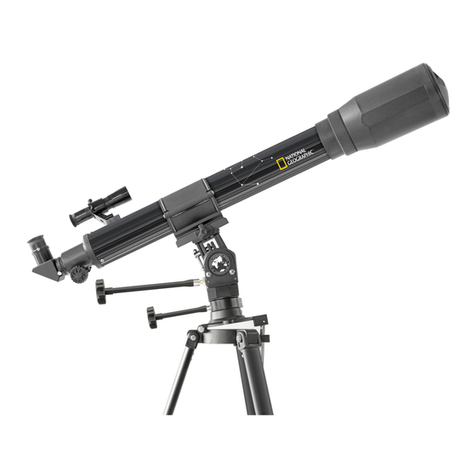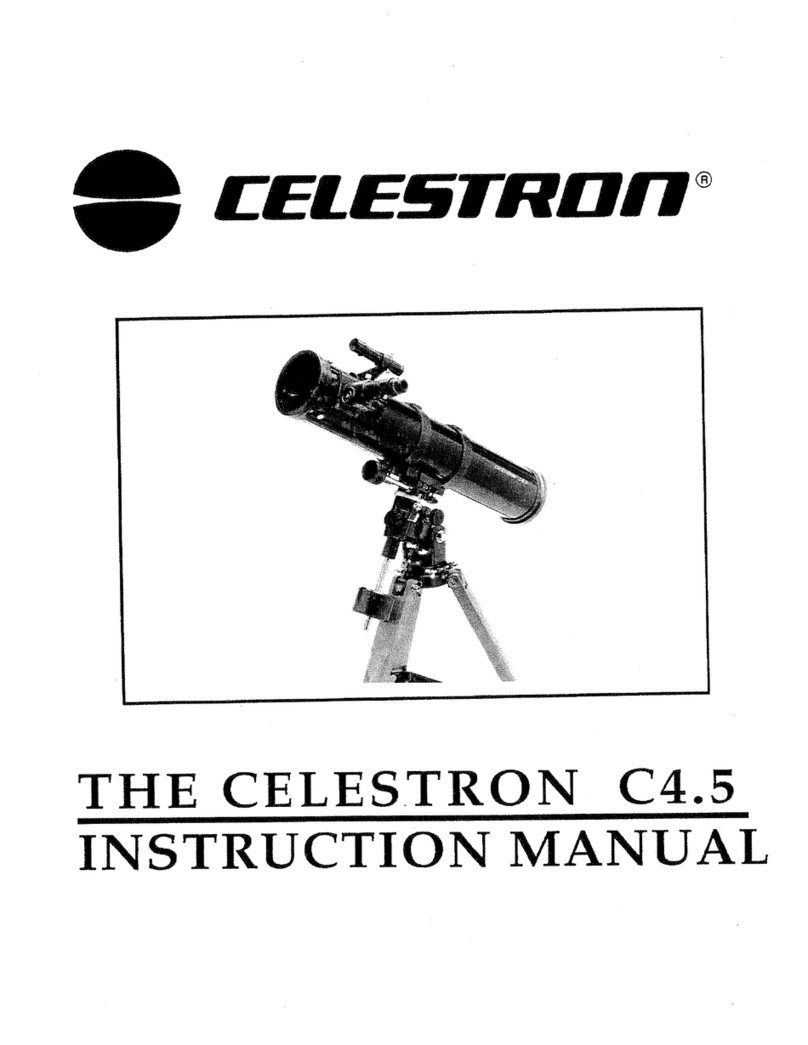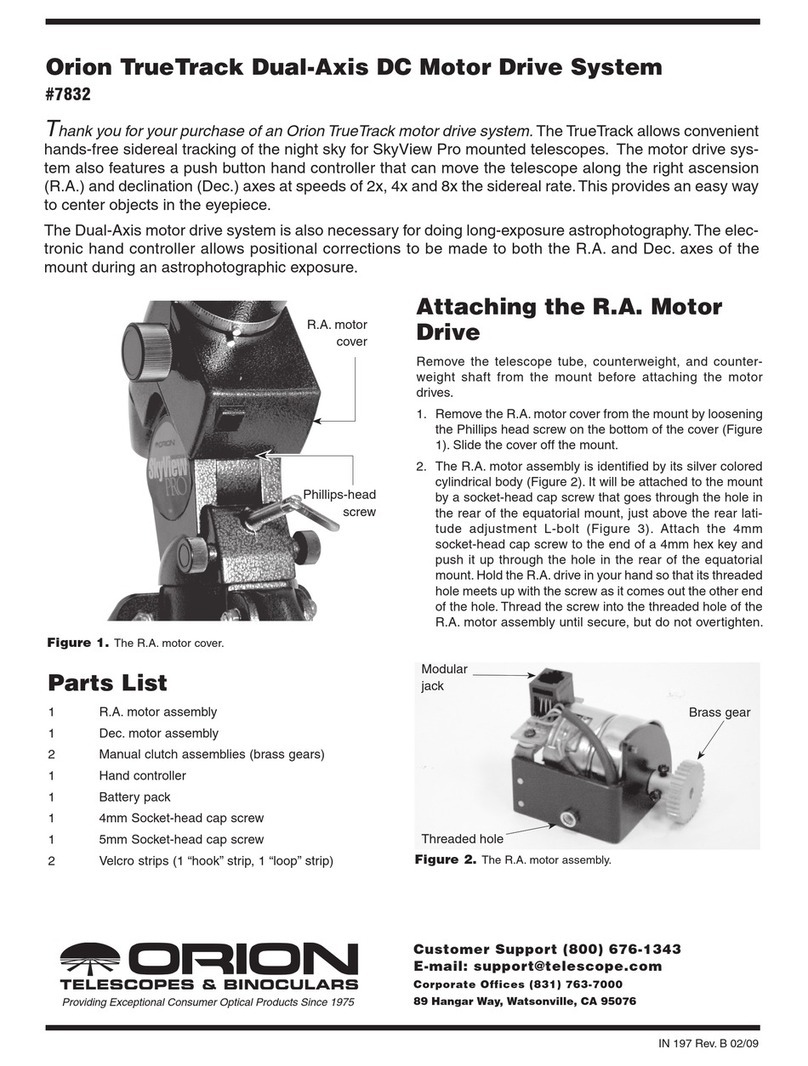Driving with the Starbook
The Starbook initializes unlike any other
go-to drive I’ve worked with, and, as such,
it took a little getting used to. The instruc-
tions say to set up the telescope and tripod
so the scope faces west and the mount’s
altitude axis aims north. An approximation
is good enough, because you’ll refine the
telescope’s aim during initialization.
When you first turn on the Starbook’s
power, it displays the company logo and
then asks what language you prefer. Japa-
nese (default), English, French, German,
Italian, and Spanish all come factory-
installed. Toggle between the choices and
then press the SELECT button to confirm.
The Starbook also asks for the local time,
date, and location. Input these using the
same menu buttons.
I had two problems using the buttons
for these and other tasks. Although Vixen
designed the buttons to be large enough to
press while wearing gloves, they are not
backlit. Instead, I had to use a flashlight to
see which button I was pushing.
The second problem was more ergo-
nomic. The 2" by 2" monochromatic-blue
LCD screen displays the two sets of buttons
with small prompts inside, each telling
what that button is configured to do. But
while the buttons are oriented vertically on
the Starbook S panel, they are displayed
side-by-side on the screen. The left set on
the screen corresponds with the top set on
the box, while the right set on the screen
matches the bottom set on the box. It
would have made operation more intuitive
if the button placement matched the dis-
play, and vice versa.
I hope Vixen corrects this second issue
with a future update to the Starbook S soft-
ware. Upgrades give this mount a huge
advantage over manual mounts or those
with non-updatable software. Check Vixen’s
web site, www.vixenoptics.com, and click
“Support” then “Downloads.” Follow the
instructions to get the latest version.
The Starbook runs in two different
modes, Chart Mode and Scope Mode. Use
Chart Mode when searching for objects on
the LCD screen without moving the tele-
scope, such as during the initial alignment
process. Scope Mode moves the telescope
in step with the displayed sky chart.
To align the Skypod, select two different
reference objects either by centering an
object in the crosshairs on the LCD screen
in Chart Mode or from a menu that appears
after pressing the “Object” button. Pressing
“Goto” slews the telescope to the chosen
object. Once there, use the up-down and
left-right buttons to center the target, first
in the red-dot finder, and then in the eye-
piece. You can adjust the slewing rate by
zooming the LCD chart in and out, which
narrows or expands the sky coverage dis-
played. Although the initialization process
was a little confusing the first time I tried it,
it soon became almost second nature.
100 astronomy ⁄⁄⁄ December 07
VIXEN SKYPOD + VMC100L
Type: Computerized, alt-azimuth mount
Aperture: 4.33 inches (110mm)
Focal ratio: f/9.4
Focal length: 1,035mm
Starbook controller: Attaches with 46"
(1.17m) cable; detachable for use as
pocket planetarium
Display: 2" by 2" (51mm by 51mm)
monochromatic, backlit LCD
Database: 22,000 objects
Power: 12 volts DC (8 AA batteries or
optional external power supply)
Price: $799 (Skypod only); $899 (Skypod
with tripod); $999 (Skypod, tripod,
and the VMC110L scope)
⁄⁄⁄ SPECIFICATIONS
COUPLE VIXEN’S
VMC110L tele-
scope and alumi-
num tripod with
the Skypod mount,
and you’ll have a
system light enough
for any observer to
transport.
Phil Harrington is a contributing editor of
Astronomy. Check out the fourth edition of his
book Star Ware (Wiley, 2007).

